Topp
Wandering around on your own and peering into the cottages at Stundars is like looking at the pictures in a very beautiful book. But hearing our skilful guides talk is like reading the text in the books.
Stundars
Every day during the summer season, guided tours with different themes are organised in the museum village. The price of the tour is included in the entrance fee. You can see the schedule of the different guided tours in the calendar.
We offer several special tours in addition to the regular tours in the summer season.
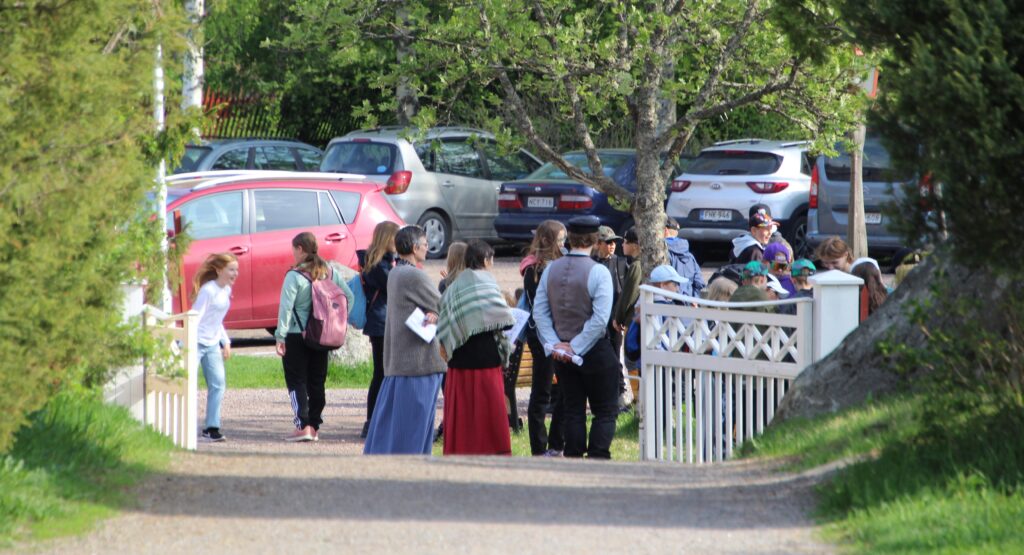
Book a guided tour for your group: Topp
Estimated time: 1 h
Group: 1-20 people/guide, more guides can be booked if the group is larger.
Languages: Swedish/Finnish/English (see below).
Price: entrance fee 8€/person + fee for the guide. Pensioners and students 5€, children 3€.
The guide fee on Mon-Fri 8-16 o’clock is 20€/guide, evenings and Saturdays 60€/guide and Sundays/holidays 85€/guide.
You can pay with cash, bank cards, MobilePay and the Museum Card. Groups can get an invoice. If the tour is part of a larger package, the price will be included in the package price.
Please book during office hours, at least two working days in advance, by phone +3586 57 099 000.
Languages Topp
The guides speak Swedish, Finnish and English. When booking, please let us know which language your group wishes to be guided in. Keep in mind: One language per guide.
On request, the guides can provide an audio-descriptive tour, so when booking please tell us if audio-descriptive interpretation is required. The guides can also use a lighter language for better understanding. The guide can also use hearing aids that the visitor has with them, such as a communicator.
There are compendiums with descriptions of parts of the museum, written in Spanish, French, Italian and German, that visitors can borrow from the yellow info-stand.
Our special guided tours Topp
The tours can be customised in terms of time, group size, background knowledge, language, etc.
You can choose from these different tours.
Who lived in the little gray cottages scattered on the edge of the forest as if washed up by a great wave? What was life like for the poor craftsmen, crofters and backwoodsmen, only a century ago? Usually, cultures and nations want to display their grandest buildings, most beautiful works of art and most precious artefacts in museums. But at Stundars, we pride ourselves on the rarity of being able to showcase the exact opposite instead. We want to tell the story of the poor paupers, day labourers, seamstresses and wise women who lived at the bottom of the social ladder in Ostrobothnia. Come and hear about hunger, toil, illness and hardship – but also about love, taking chances and dancing barefoot in the bright summer night.
“I’ve seen the houses, walked around among them, but I didn’t realise there were people who actually lived like this – and it wasn’t that long ago either!”
Older lady
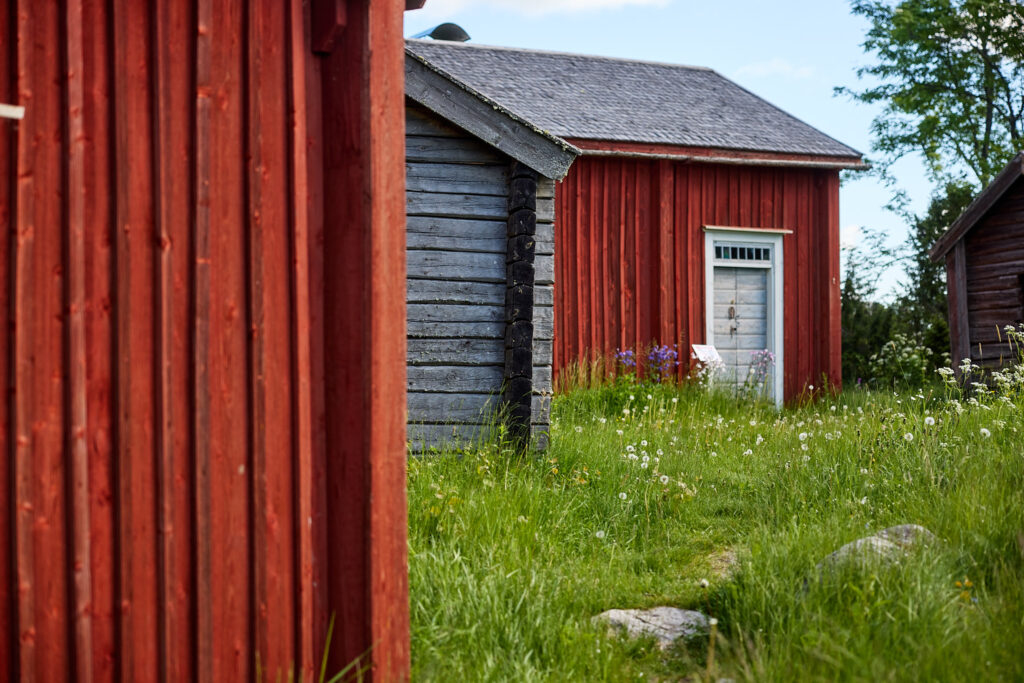
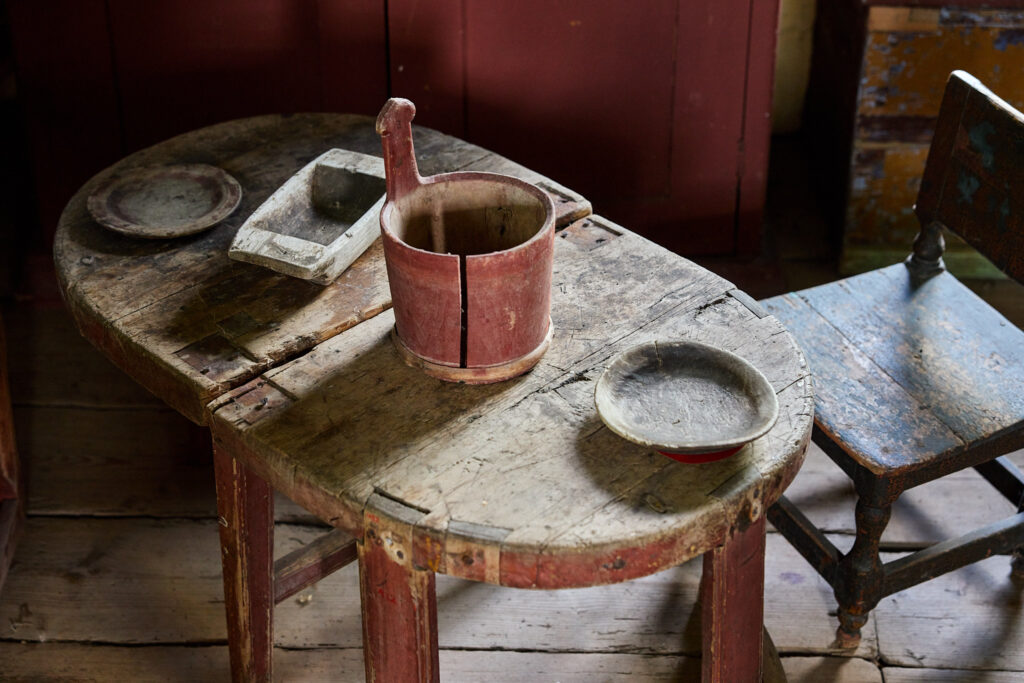

In the second half of the 19th century, the wider world began to seep into the lives of the commoners in rural Ostrobothnia. Novelties such as newspapers, advertising, pre-baked crispbread and factory-made horseshoes spread from the new hub of the village, the general store. And with new fashions came new political ideas, dreams of emigration, and even recipes for the trendy Högfors stove! How did it feel to see the very first car, telephone or electric lamp in Solf in 1920? Follow us in the footsteps of development from the traditional farmhouse, to the elementary school, the post office, the general store and finally to the modern kitchen and fine parlour of the merchant’s wife.
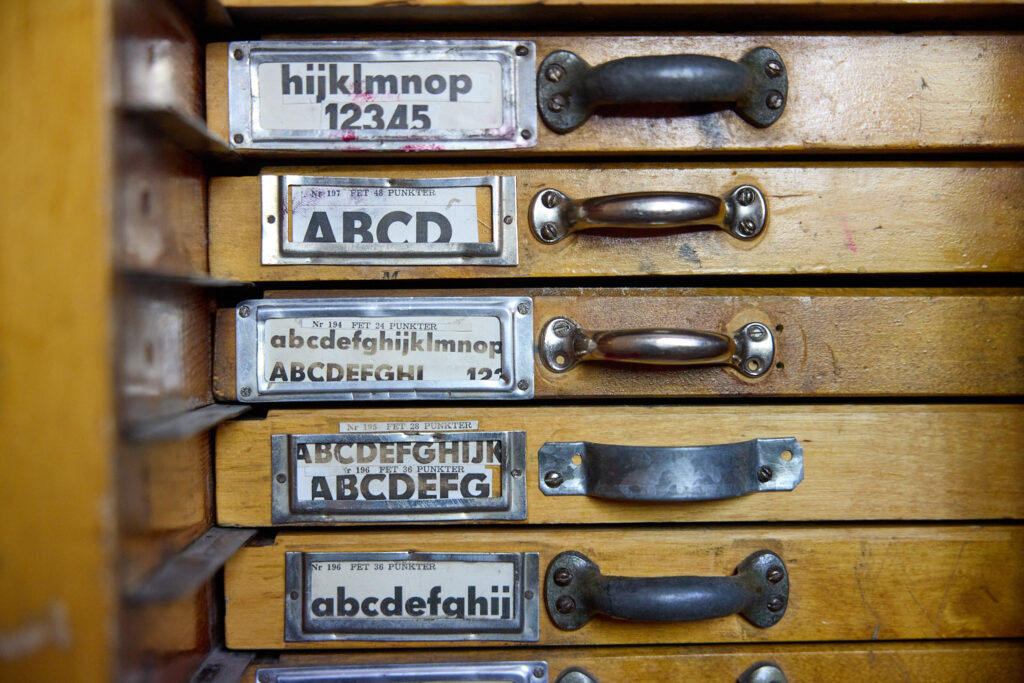


In 1938, newly graduated primary school teacher Gunnar Rosenholm came to the village. One of his first tasks for his new pupils was to collect old artefacts for a history lesson. This lesson was the start of an eager collection of everything from agricultural tools to ghost stories. Soon Stundars was engaging people from half the county. House after house was moved here and the area became one of Finland’s largest open-air museums – all through enthusiastic volunteer work! Not to mention the parties held here! Or the theatre-shows, with the beautiful museum cottages as a backdrop! This tour is dedicated to Stundars, because this year we are celebrating 50 years! Hooray! (NOTE! In the tour you will hear about why we have technically also celebrated 100 years already…)
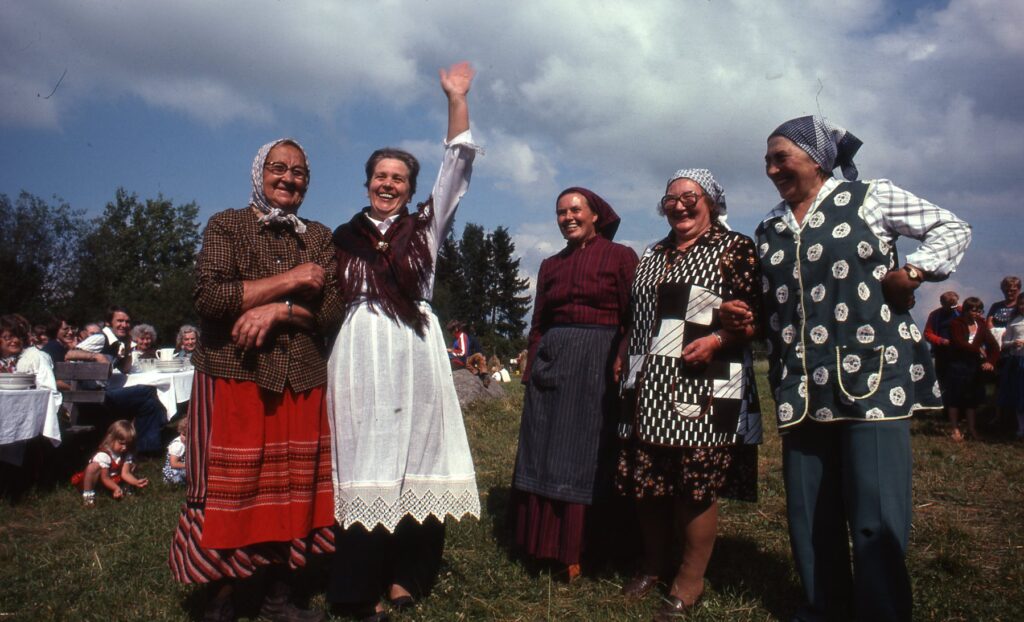
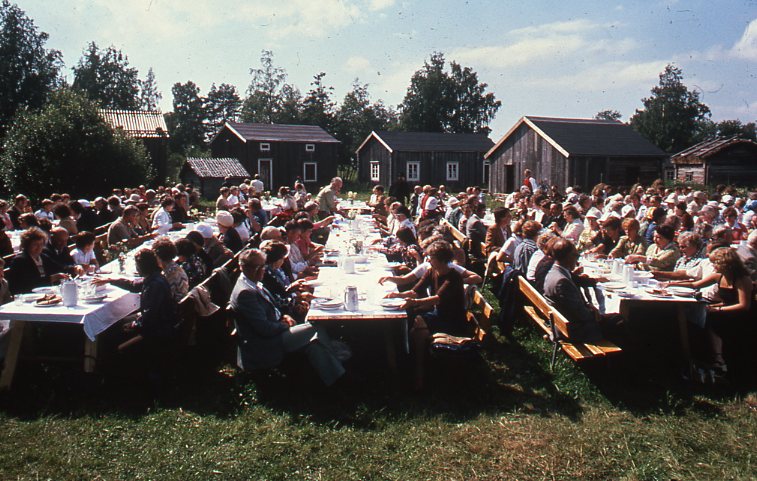
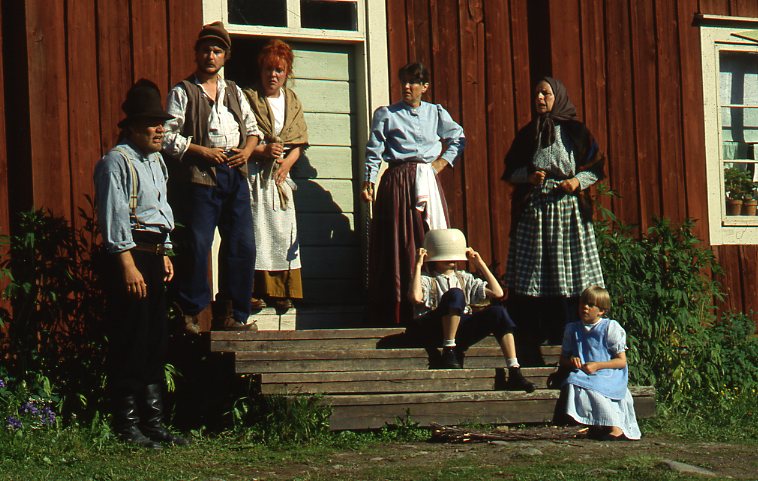
All children, listen up! Get up from your sleeping places in the farmhouse, rub the sleep from your eyes and sit down at the table to eat the morning porridge, prepared on the open fire by the housewife. But be careful not to sit in the farmer’s place! And remember to lick the spoon – because that’s how they used to wash the dishes! Then it’s off to the farm, to feed the animals in the barn, fetch water, bring in wood, and dust carpets, just like children did 150 years ago. Only when all the chores are done can you play!
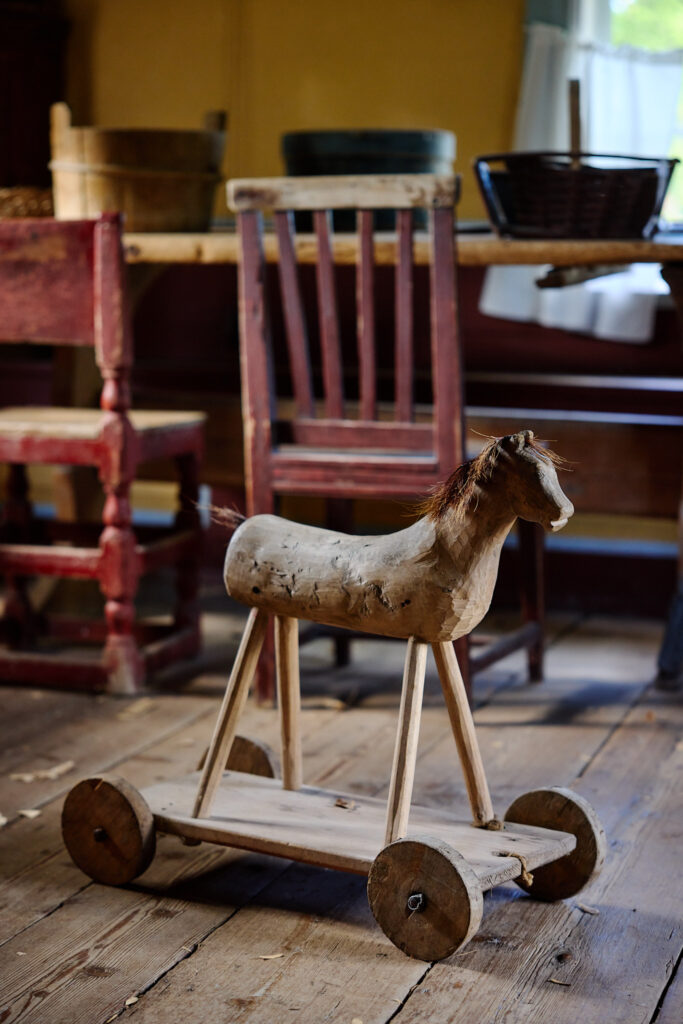
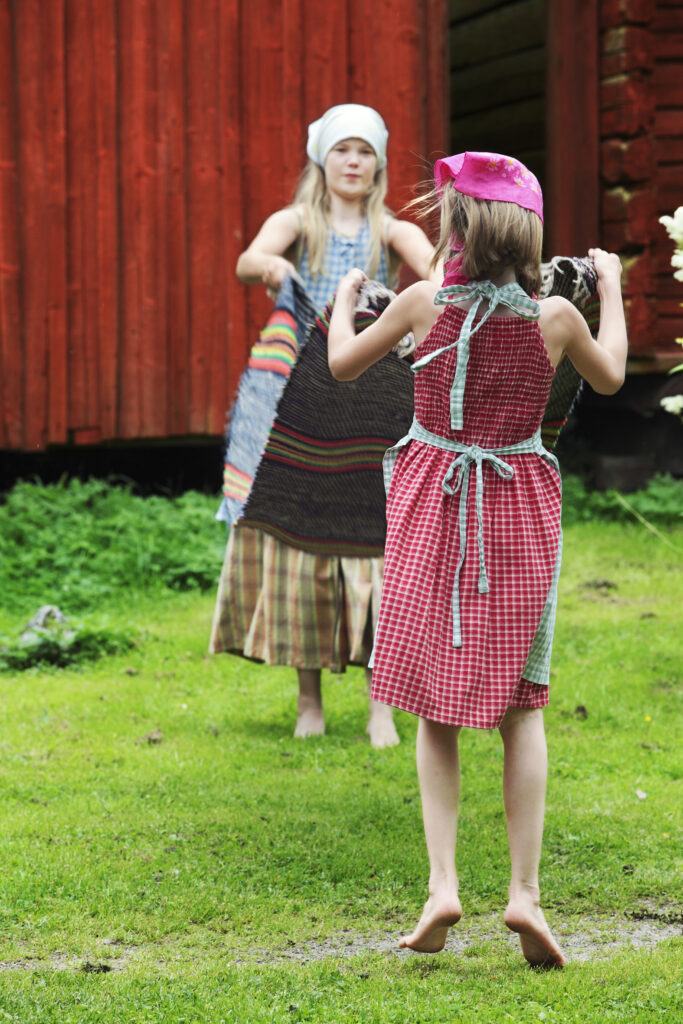
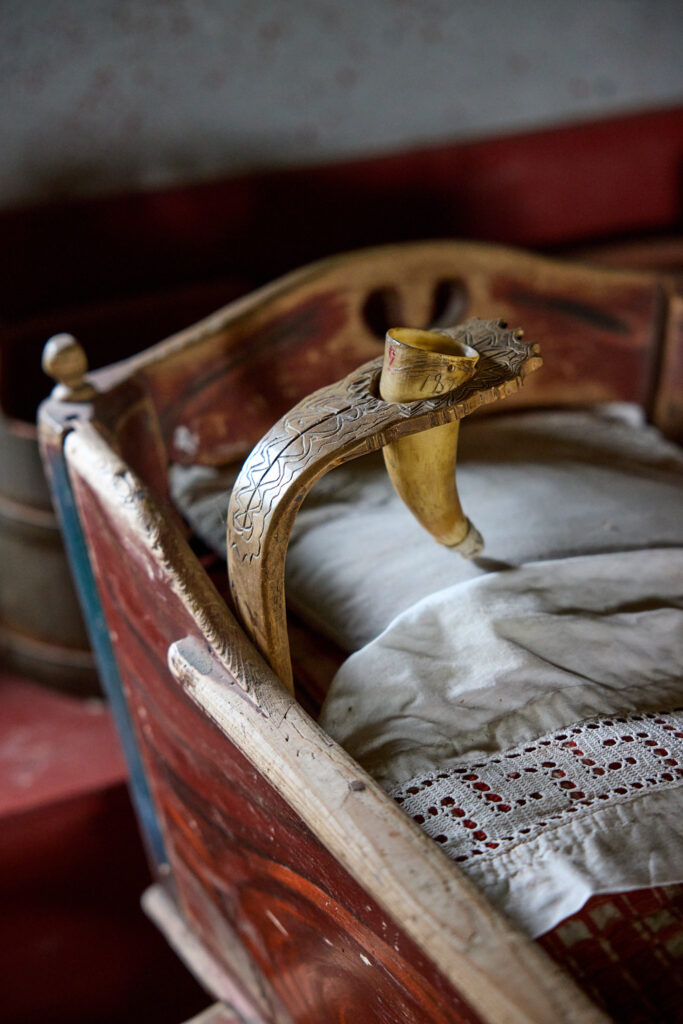
Here you can see our other programme packages for children, school and daycare groups.
The museum village of Stundar remains like a black and white photograph from long ago. But if you know what clues to look for in the Ostrobothnian landscape, the surroundings open up like an old map and you can recognise the traces of our ancestors’ work. Why did they plant birch trees and why was the number of windows so important? What plants remain where there was once a farmhouse full of children? Where was the seashore 200 years ago, or 500? And why are there so many stone fences in old Ostrobothnian villages? With Stundars and Solf church village as examples, we will introduce you to how the old cultural landscape can be seen through a kaleidoscope of modern infrastructure and architecture. NOTE! The tour works best when the ground is free of snow
”Nostalgia came upon me”
Older gentleman
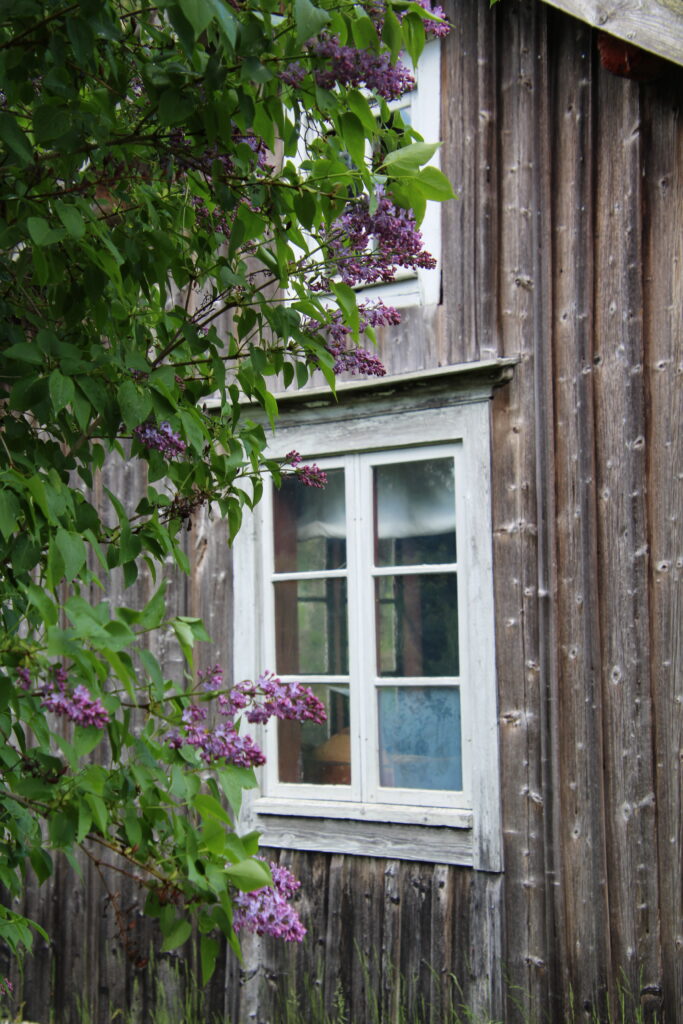
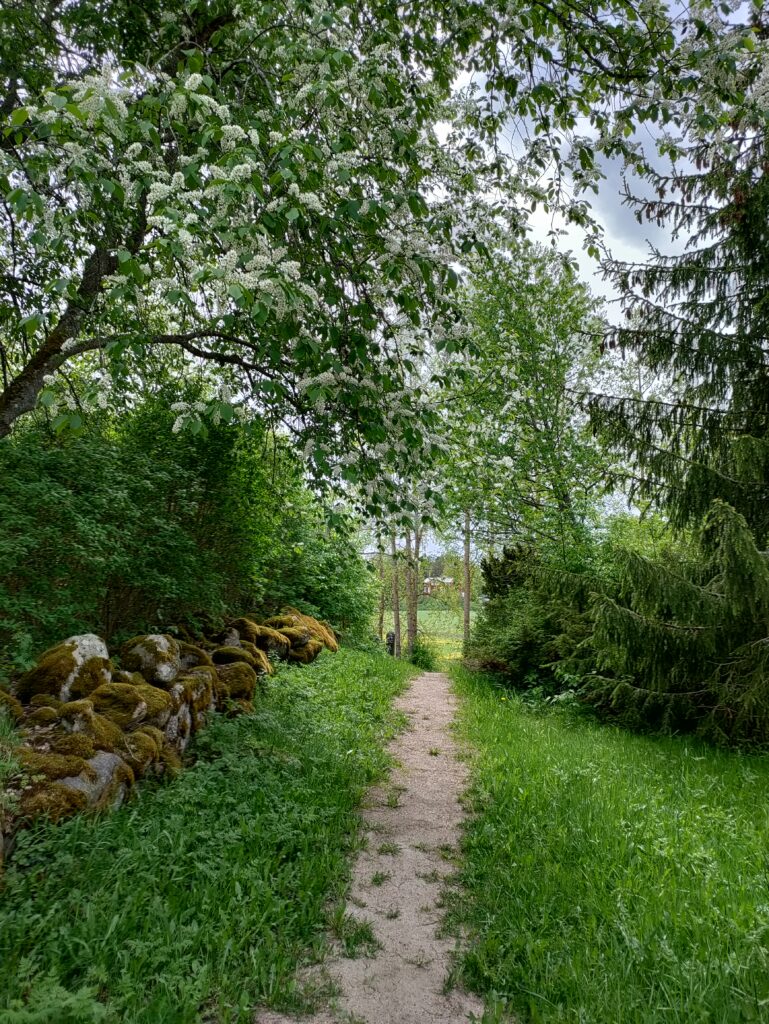

It is easy to forget the amazing craftsmanship that women could produce in the past, especially since textile fibres cannot withstand the test of time in the same way as metal and wood. But when you study the linens in the museum cottages more closely, you can see the exquisite craftsmanship, sense of colour and feel for different materials that women could possess. A young woman was valued according to the contents of her wedding chest, proudly displayed in the Girl’s Shed in the summer. A large part of the family’s livelihood could come from clothes and fabrics made from sheep’s wool, flax and other plant fibres. During the guided tour we will see textiles ranging from the coarsest everyday clothes to the most beautiful quilts, to vital tools such as a spinning wheel, loom, and a rolling board.
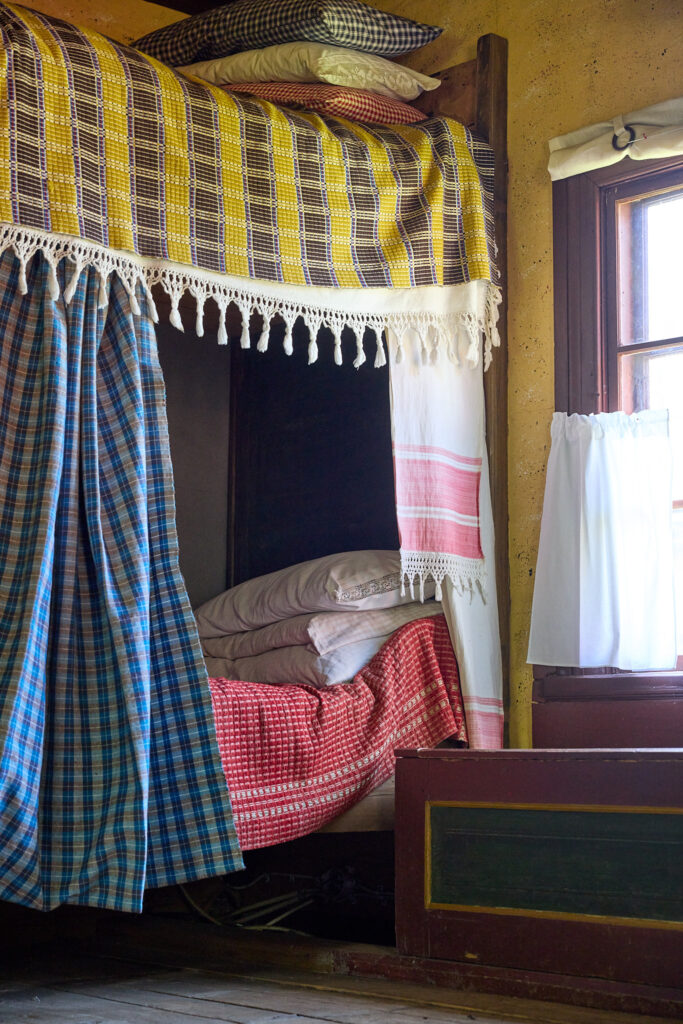

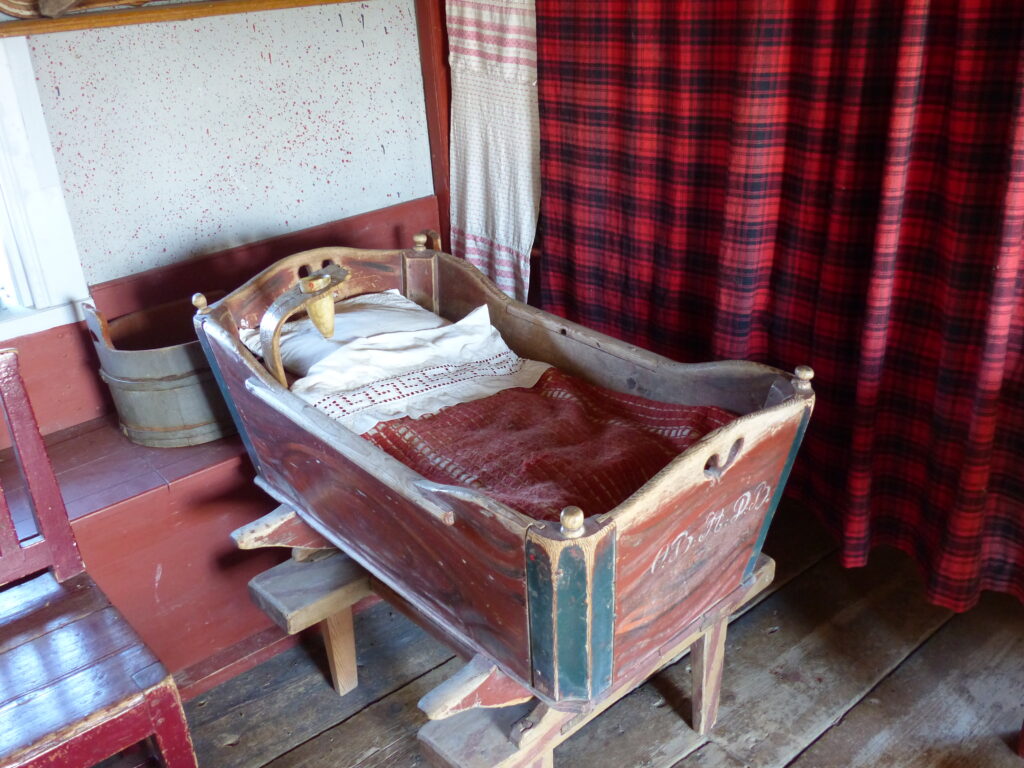
During an old-fashioned school lesson, you can practise counting on the abacus or reading from the ABC book. If you’re good, you can even write with a real ink pen. Remember, the teacher may check whether you’ve washed your ears properly – and if you mess up, you might have to stand in the corner of shame!
During this lesson, the group will experience an authentic century-old school environment. In addition, the teacher, i.e. the guide, will explain how primary school was crucial to the transformation of Finland from an underdeveloped and poor backwater to one of the happiest and most equal countries in the world.
Group size: 20 people at the most.
Estimated time: 45 minutes
Språk: svenska / finska / engelska. Only one language per guide.
Dress code: Guest s do not have to prepare in a special manner, but keep in mind that the school-house is not heated.

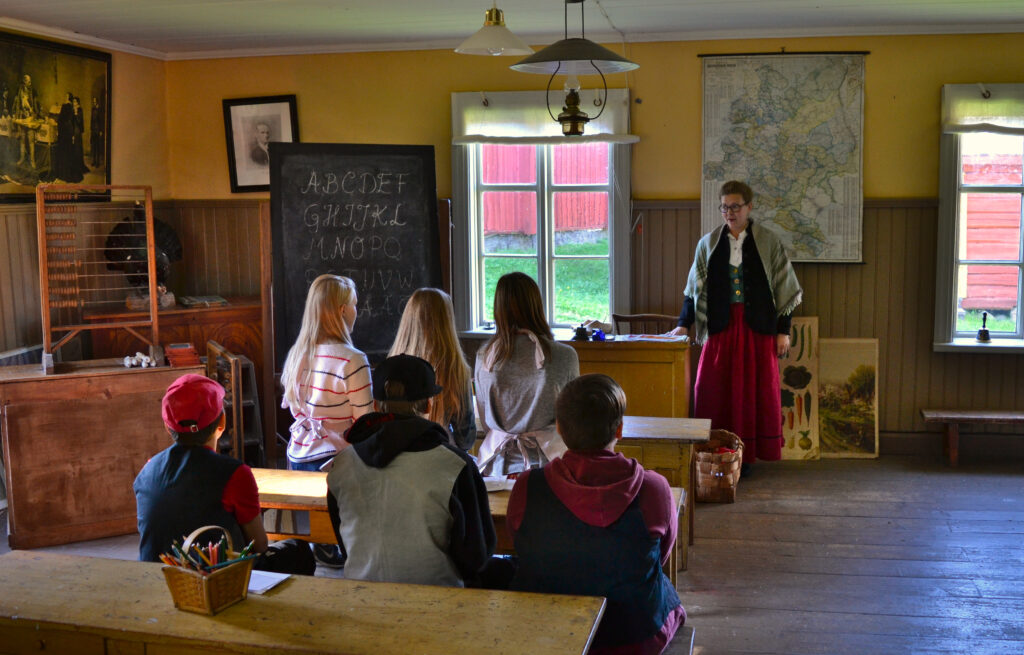
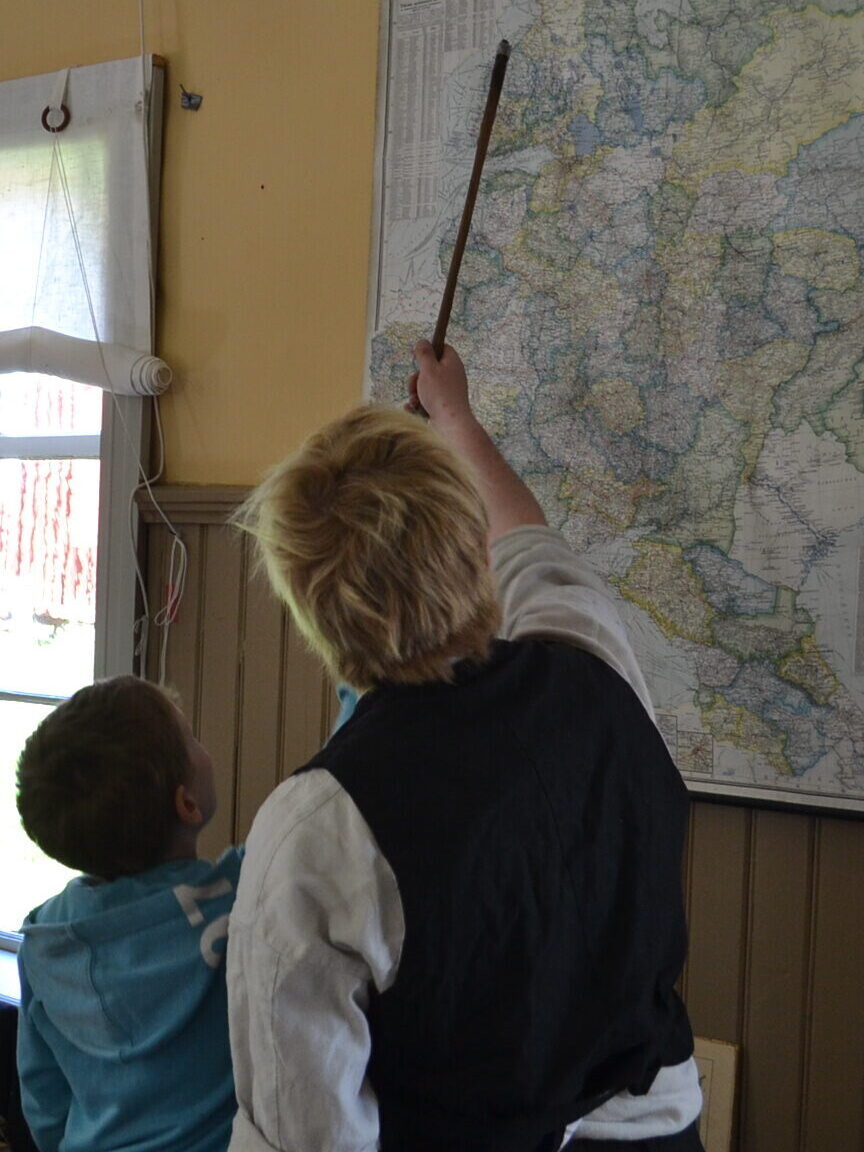
If you wish to book a guided tour for a group, perhaps you are also curious about our other programmes for groups? Here you can compose a custom programme for a group.
NOTE! For guided tours can be adapted to different needs, such as visual interpretation, please contact Stundars in advance.
To book a guided tour, call us on +3586 57 099 000 during office hours or email in advance to info@stundars.fi.



